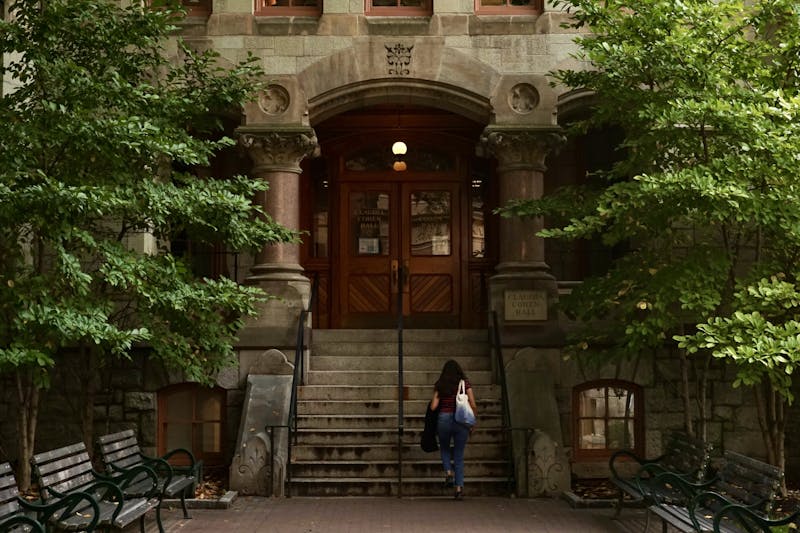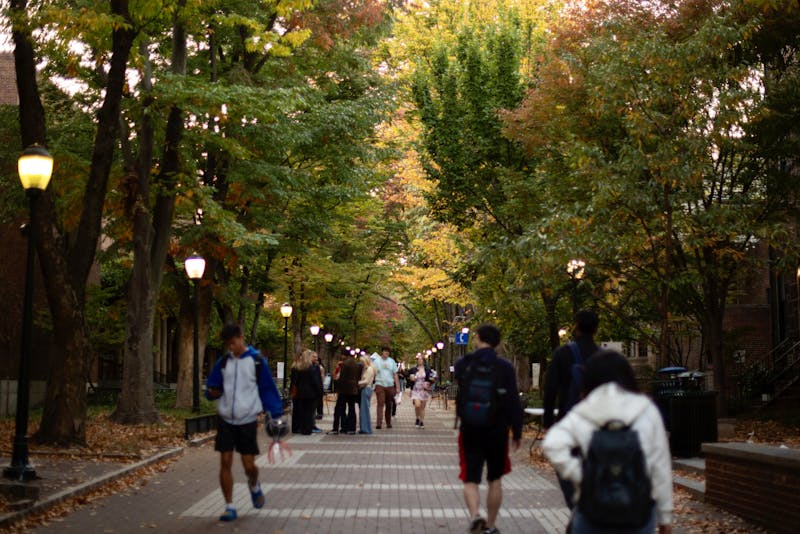
Penn will implement a new block schedule format beginning in fall 2021 to standardize class start times and eliminate the possibility of back-to-back classes.
Under the new format, classes will start at one of eight designated start times beginning at 8:30 a.m. and ending at 8:30 p.m., with the latest classes ending at 10 p.m. Classes will run for either 60, 90, or 180 minutes, and students will have at minimum 15 minutes between classes.
University administrators said they aim to ease the course selection process by reducing course conflicts and encourage wellness on campus by providing breaks between classes.
The block schedule is intended to "increase the opportunity for student and faculty interactions after a class meeting, to support cross-school course enrollment, to provide built-in breaks between courses scheduled consecutively to promote student and faculty wellness, and to reduce the number of courses that overlap/conflict in time, thereby providing greater course selection for students,” Associate Vice Provost for Education and Planning Gary Purpura wrote in an email to The Daily Pennsylvanian.
Professors had mixed reactions to the new scheduling format, with some embracing the guaranteed breaks between classes and some believing that the change was unnecessary.
Undergraduate Chair of the Department of Anthropology Katherine Moore said the block schedule was first discussed by Penn administration in fall 2020. She believes students and faculty will benefit from the change, adding that the new schedule works for her personal teaching style.
Moore said she hopes longer breaks between classes will prevent students from having to rush to their next class. She added that if the University returns to in-person teaching in the fall, the breaks will allow professors more time to sanitize classrooms.
“We wanted to ensure that classrooms would be safe before we brought students back into them, and one of the ways that we are going to increase classroom safety is by making the time blocks in between classes much longer,” Moore said.
Some professors, however, found the change to be unexpected and unnecessary. Director of Undergraduate Studies in the Psychology Department Elizabeth Brannon wrote in an email to the DP that she and some of her colleagues believe that the new block schedule was neither properly explained nor justified to faculty.
Brannon wrote that one of the unintended consequences of the new schedule is that it may disincentivize students and professors from registering for and teaching classes that meet three times a week.
Political Science professor Robert Vitalis is also wary about the schedule change, telling the DP that the University did not inform professors about the change with an adequate explanation.
“It's been unclear to me why this matters and what their goals and objectives are in undertaking this change. It's never been explained. And if you’re not explaining it to faculty and to students, that's a disaster," Vitalis said.
Students similarly expressed mixed feelings with the new scheduling format. Some students said the longer breaks between classes will eliminate the need to rush to class when in-person learning returns, but some will miss the ability to schedule courses back-to-back.
Wharton sophomore Shawn-Ryan Bootsma called the change “a double-edged sword,” as it may be beneficial to students who dislike taking classes back-to-back but could be a challenge for those who prefer scheduling classes this way.
College junior Tori Borlase said she is grateful for the fact that she will no longer have to sprint from David Rittenhouse Laboratories to Huntsman Hall and will be able to eat lunch during the guaranteed breaks. She added, however, that she is concerned about the lack of flexibility this standardization may allow in course registration.
Despite their mixed views, some students think the new schedule will have an overall positive impact.
“My general impression is that they designed this new schedule in an attempt to benefit both students and professors, so I appreciate that, just because sometimes it does feel like people who design and schedule stuff don’t really know what it’s like to actually be a student or a professor at Penn," Borlase said. "I think it will have a net positive impact on students and professors who have to run between classrooms."
College senior and Undergraduate Assembly President Mercedes Owens echoed Borlase's sentiments, praising the University for prioritizing mental health. She said this move was presented to her at meetings with administrators as an essential change to promote student and faculty wellness.
“I think, honestly, that [administrators] have been doing a lot this year, from a lot of the meetings I go to, and have done a better job of prioritizing mental health, and this can be seen with the extension of the unlimited pass/fail policy and with the implementation of break days throughout the semester," Owens said. "They’ve been doing a better job of listening this year and I really do appreciate that."
Purpura told the DP that the new block schedule will be a large change for the faculty members who are used to teaching their courses at the same time each semester, as well as for students who are familiar with the times that courses were previously offered.
“The benefits of the new grid for faculty and students alike, we expect, will outweigh the initial challenge of scheduling courses into the new grid,” Purpura wrote.
A previous version of this article incorrectly stated that Brannon thought the new schedule system may disincentivize students and professors from registering for and teaching courses that are three hours long, when in fact, Brannon was referring to classes that meet three times a week. The DP regrets this error.
The Daily Pennsylvanian is an independent, student-run newspaper. Please consider making a donation to support the coverage that shapes the University. Your generosity ensures a future of strong journalism at Penn.
Donate






